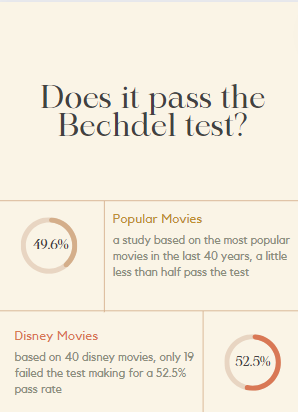Media, specifically movies, tend to villainize women’s anger and downplay their reactions, but the accurate portrayal of a woman’s anger has recently been surfacing. The phenomenon of female rage has recently surfaced on many social media platforms, particularly TikTok.
The issues with depicting female rage can vary: some are inaccurate, and some are deemed “overdramatic.” In an interview, actress Anya Taylor-Joy expressed her frustration with the misinterpretation of women’s anger in scripts and writing, saying, “I get a lot of men doing really terrible things and women sitting silently whilst one tear slowly falls, and I’m like oh no no no no no, we get mad and angry”. While some women may cry when angry, this broad generalization and stereotyping is not always the case. The idea that women overreact when they are screaming and yelling out is inherently harmful to women as a whole and invalidates their feelings. Words like dramatic, emotional, and sensitive have, in a way, been assigned to women. So, when a woman’s anger is accurately depicted in films, those words tend to come to mind because of the deeply rooted misogynistic outlook on female rage. There tends to be an ingrained idea that when men are angry and express that anger by yelling, they are assertive and stand up for themselves; but when women turn around and have the same reaction, they are dramatic and sensitive. There is a difference between the vocabulary used when describing men’s and women’s emotions.

Made on Canva
In 1985, cartoonist and writer Alison Bechdel wrote a comic strip of two queer women talking about movies. One of them expresses certain criteria that have to be met for her to enjoy a movie. That is when the Bechdel test was born. The three key rules for a movie to pass the Bechdel test are: at least two women are featured, these women talk to each other, and they discuss something other than a man. Popular movies that fail the Bechdel test are Avatar, most Star Wars movies, The Imitation Game, Aladdin, Big Hero 6, The Lion King, and many more. Movies, such as Aladdin, that have a female lead, can still fail the Bechdel test. Jasmine is the only woman with a main role in the movie, causing an immediate failure of the test. Movies like The Little Mermaid can be debated on whether or not it passes the test. While there are numerous women characters, the conversations all surround the idea of love and men. The only reason it can be debated that it does pass the test is because Ariel’s sisters talk about Ariel being in love, but they don’t specify that it’s with a man. It can be argued that Ariel’s love was implied to be towards a man. A 2022 study found that only 49.6% of the 1,200 most popular movies from the last 40 years passed the Bechdel test.

The life of movies and Hollywood, and arguably society as a whole, still has a flawed view of women in film. Whether it be the misinterpretation or inaccurate portrayal of female rage or the lack of female representation without the added plot of men, there is a deep-rooted misogynistic idea of women. With movies continually feeding into these flawed ideas, they are, in turn, influencing the media that society consumes and repeat
the cycle of entrenched ideas that women are “overdra
matic,” “emotional,” “sensitive,” and can’t have a life without men.





